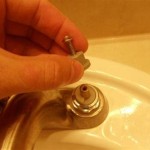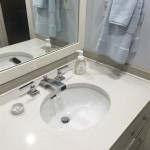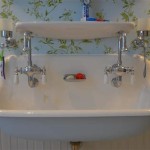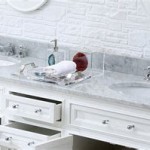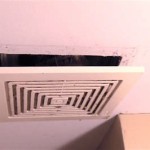What Are Those Tiny Bugs In My Bathroom?
Discovering small insects in the bathroom can be unsettling. Bathrooms, with their inherent moisture and potential for organic matter accumulation, provide an attractive habitat for various types of tiny bugs. Identifying these pests accurately is crucial for implementing effective control measures. This article provides a comprehensive overview of common tiny bugs found in bathrooms, their identifying characteristics, the factors attracting them to this environment, and strategies for their elimination and prevention.
Several distinct types of small insects frequently inhabit bathrooms. These vary in appearance and preferred food sources, requiring different management approaches. Understanding each type's specific characteristics is essential for targeted pest control.
Common Bathroom Bugs and Their Identification
The most prevalent tiny bugs encountered in bathrooms typically fall into a few specific categories. Recognizing their distinctive features aids in determining the appropriate course of action.
Drain Flies (Psychodidae): Often referred to as moth flies or sewer flies, drain flies are small, fuzzy insects, approximately 1/8 inch in length. They are typically gray or brown in color and possess noticeably large, rounded wings that they hold roof-like over their bodies when at rest. Their most distinguishing feature is their erratic, moth-like flight pattern. Drain flies breed in stagnant water and organic matter accumulation, making drains, pipes, and poorly maintained plumbing ideal breeding grounds. Larvae feed on decomposing organic material within these areas, contributing to the issue's persistence if left unaddressed.
Fruit Flies (Drosophilidae): While commonly associated with overripe fruit in kitchens, fruit flies are also frequently found in bathrooms, especially if sugary residues or other potential food sources are present. These small flies, usually about 1/8 inch long, are typically tan or brown with red eyes. Fruit flies are attracted to fermentation processes and any source of sugar, including spilled shampoo, soap residue, and even biofilm buildup in drains. Their rapid reproductive cycle allows populations to escalate quickly, demanding prompt attention for effective management.
Springtails (Collembola): These tiny, wingless insects are characterized by their ability to jump or spring when disturbed, a trait derived from a forked appendage located under their abdomen. Springtails are extremely small, often less than 1/16 inch in length, and their coloration can range from white or gray to dark brown or even metallic. They thrive in damp environments with high humidity and decaying organic matter. Bathrooms provide an ideal habitat due to moisture accumulation around sinks, tubs, and toilets. Springtails feed on mold, fungi, and decaying plant matter, often flourishing in areas with poor ventilation.
Silverfish (Lepisma saccharina): These nocturnal insects are easily identifiable by their silvery, metallic appearance and their carrot-shaped bodies. They are typically ½ to ¾ inch long, with long antennae and three bristle-like appendages extending from their posterior end. Silverfish prefer warm, humid environments and feed on starches, sugars, and cellulose. In bathrooms, they may consume paper products, glue in wallpaper, and even cotton or linen fibers. Their ability to survive for extended periods without food makes them a persistent pest once established.
Booklice (Psocoptera): Often mistaken for dust mites due to their small size (less than 1/25 inch long), booklice are pale, soft-bodied insects that feed on mold and fungi. They are typically found in damp, poorly ventilated areas where mold growth is prevalent. Bathrooms, with their high humidity and potential for mold formation, can provide a suitable environment for booklice to flourish. Unlike true lice, booklice do not feed on blood and are not parasitic.
Factors Attracting Bugs to Bathrooms
Understanding why certain bugs are drawn to bathrooms is critical for preventing infestations. Several environmental factors commonly found in bathrooms create an inviting environment for these pests.
Moisture and Humidity: The high humidity levels prevalent in bathrooms create an ideal breeding ground for many insects, particularly those that require moisture for survival and reproduction. Leaky pipes, condensation, and inadequate ventilation contribute to elevated moisture levels, attracting drain flies, springtails, and booklice. Addressing these moisture sources is a primary step in preventing and controlling infestations.
Organic Matter Accumulation: Drains and plumbing systems often accumulate organic matter, such as hair, soap scum, and skin cells. This organic debris provides a food source for drain flies and other insects, supporting their populations. Regular cleaning of drains and pipes is essential to remove these food sources and prevent infestations. Spilled shampoo, toothpaste, and other bathroom products can also contribute to organic matter buildup, attracting fruit flies and other pests.
Mold and Fungi Growth: Mold and fungi thrive in damp environments, making bathrooms particularly susceptible to their growth. These organisms serve as a food source for springtails and booklice. Addressing the underlying causes of mold growth, such as leaks and poor ventilation, is crucial for eliminating these pests. Regular cleaning and disinfection of surfaces prone to mold, such as shower tiles and grout, are also important preventive measures.
Access Points: Cracks and crevices in walls, floors, and around plumbing fixtures provide entry points for insects to access the bathroom. Gaps around pipes, windows, and door frames can also serve as pathways for pests to enter from outside. Sealing these entry points with caulk or sealant can help prevent insects from entering the bathroom. Furthermore, ensuring that window and door screens are properly installed and maintained can further reduce the likelihood of infestations.
Effective Strategies for Elimination and Prevention
Controlling tiny bugs in the bathroom requires a multi-faceted approach that addresses both the existing infestation and the underlying conditions attracting the pests. A combination of cleaning, sanitation, and targeted pest control measures is often necessary for effective management.
Thorough Cleaning and Sanitation: Regular cleaning is paramount in eliminating food sources and breeding grounds for bathroom pests. This includes cleaning drains with enzyme-based drain cleaners to break down organic matter, scrubbing surfaces prone to mold and mildew, and removing spilled liquids and debris. Pay particular attention to areas under sinks, behind toilets, and around shower stalls. Consistent cleaning reduces the availability of food and breeding sites, making the environment less attractive to insects.
Moisture Control: Reducing moisture levels is essential for preventing and controlling bathroom bug infestations. Repairing leaky pipes and faucets, improving ventilation by using exhaust fans during and after showers, and drying wet surfaces promptly can significantly reduce humidity. Consider using a dehumidifier in bathrooms with persistent moisture problems. Properly sealing grout and caulk around tubs, showers, and sinks prevents water from seeping into walls and floors, reducing the risk of mold growth and insect infestations.
Targeted Pest Control Measures: Depending on the type of bug infesting the bathroom, specific pest control measures may be necessary. For drain flies, using a drain cleaner specifically designed to eliminate organic buildup in drains can be effective. Fruit flies can be trapped using homemade traps filled with apple cider vinegar or wine. For springtails and booklice, addressing mold and mildew issues and reducing humidity is often sufficient to eliminate the infestation. Insecticides labeled for use against the specific pest can be used as a last resort, but should be applied carefully and according to the manufacturer's instructions. Always prioritize non-chemical methods whenever possible.
Preventative Measures: Implementing preventative measures is crucial for long-term control of bathroom bug infestations. Regularly cleaning drains, maintaining proper ventilation, sealing entry points, and promptly addressing any moisture issues can help prevent bugs from establishing themselves in the bathroom. Consider using natural repellents, such as essential oils like peppermint or eucalyptus, to deter insects from entering the area. By proactively addressing potential problems, you can minimize the risk of future infestations and maintain a pest-free bathroom environment.

Why Are There Bugs In My Bathroom

Identify Tiny Bugs In Bathroom And Get Rid Of Them For Good

4 Tiny Bugs In Shower Grout And Bathroom How To Get Rid Of Them

Tiny Bugs In Your Bathroom Identification Control Worst Room

Tiny Bugs In Your Bathroom Identification Control Worst Room

Identify Tiny Bugs In Bathroom And Get Rid Of Them For Good

Tiny Bugs In Your Bathroom Identification Control Worst Room

Why Do I Have Springtails In The Bathroom Insectek Pest Solutions
Tiny Black Bugs In The Bathroom What They Are And To Do School Of

16 Tiny Bugs On Walls And Ceiling That You Must Get Rid Of
Related Posts
